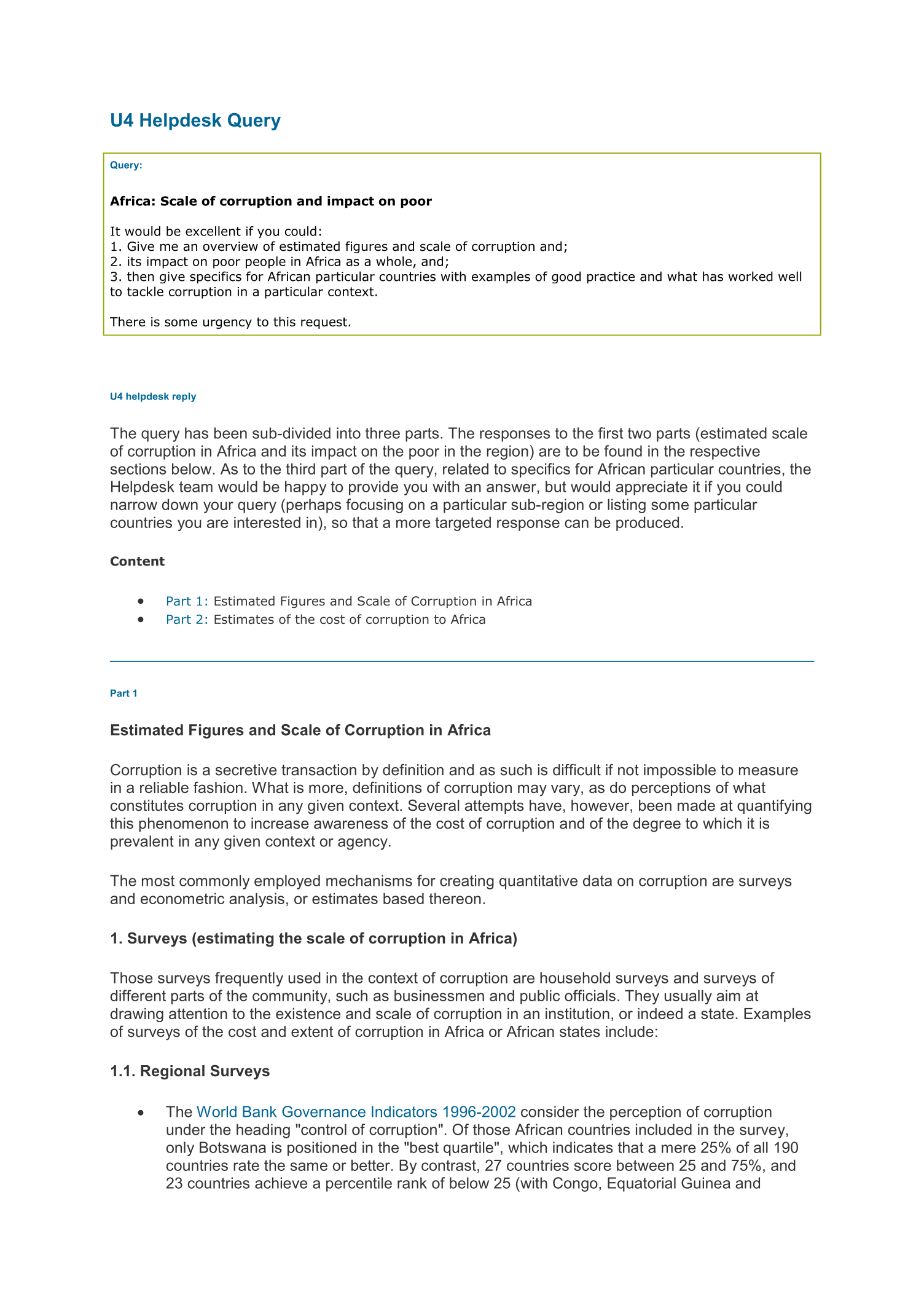U4 Helpdesk Answer
Africa: Scale of corruption and impact on poor
The most commonly employed mechanisms for generating quantitative data on corruption are surveys, economic analysis or estimates based thereon. At regional levels, the World Bank governance indicators, TI Corruption Perception Index, the Southern African Democracy Barometer as well as TI’ Global Corruption Barometer provide valuable information on the extent of corruption in Africa. At the national level, various corruption surveys have been conducted in Ghana, Kenya, Madagascar, Morocco, South Africa, Tanzania and Uganda between 1996 and 2003. Corruption in Africa is not only perceived to be widespread but costly. There have been attempts to quantify the impact of corruption on the national economy, aid effectiveness, revenue collection and household expenditure. But the cost of corruption can not only be measured in terms of the loss of funds but also in terms of delayed development and increased inequalities.

Cite this publication
. 2003. Africa: Scale of corruption and impact on poor. Bergen: U4 Anti-Corruption Resource Centre, Chr. Michelsen Institute (U4 Helpdesk Answer 2003)
Disclaimer
All views in this text are the author(s)’, and may differ from the U4 partner agencies’ policies.
This work is licenced under a Creative Commons Attribution-NonCommercial-NoDerivatives 4.0 International licence (CC BY-NC-ND 4.0)